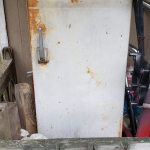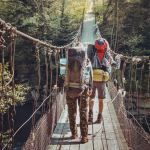3 Lessons From How Schools Responded alliston flooring To The 1918 Pandemic Worth Heeding Today
In their place emerged lunch rooms, soda fountains, automats. Restaurants continued to provide sustenance for urban workers—much as major fast-food chains do today. Cities mandated that residents wear masks at all times, a requirement that lasted well after quarantines ended in some locales.

- The House did not stop operating at the peak of the flu outbreak during October, but its schedule was affected.
- An industry survey conducted before the coronavirus outbreak indicated that “off-premise” service (drive-thru, takeout, delivery) accounted for 60 percent of all restaurant orders.
- I don’t believe sick people care who is attending to them when they are on the brink of death.
- From the June 28th, 1914, assassination through the end of the decade, inclusive of the War and the horrific 1918 pandemic, U.S. stocks returned around 5.4% annualized.
Institutional investment manager authoring on a variety of topics that pique my interest, and could further discourse in this online community. I hold an MBA from the University of Chicago, and have earned the CFA designation. My articles may contain statements and projections that are forward-looking in nature, and therefore inherently subject to numerous risks, uncertainties and assumptions. While my articles focus on generating long-term risk-adjusted returns, investment decisions necessarily involve the risk of loss of principal.
Teacher Dies From Coronavirus 1 Week Into The School Year
Elsewhere as well, success consists of celebrity chefs parlaying name recognition into a continued income stream. Dominique Crenn in San Francisco has closed her Atelier alliston flooring but offers “Crenn Kits” to go . Get a daily selection of our top stories based on your reading preferences. Walks and breaths of fresh air were also encouraged to help stave off infection. Another practice that officials, specifically in Massachusetts, believed to be effective was “fresh air treatments.”
Looking Back At The Laws That Came With The 1918 Spanish Flu Pandemic
Gov. Tony Evers, a Democrat, issued Wisconsin’s Safer at Home order in late March and has since extended it through May 26 while easing minor restrictions related to golf courses and curbside services. Evers last week announced a program to reopen the economy in phases if certain testing, contact tracing and case reduction criteria are met. Milwaukee was one of four cities with lowest rate of disease, at least 30% lower than most cities.
By contrast, 126,000 Britons have lost their lives due to coronavirus. The average age of people who died from the disease in England and Wales is just over 82. The global mortality rate for Spanish flu is estimated to have been between 10 and 20 per cent of those who were infected. Breitnauer explains how ordinary hospitals became ‘centres for the spread of the disease’ and as patients were kept in wards with ‘sealed’ windows despite expert insistent they should have access to ‘cool, dry and fresh air’. During the Spanish flu pandemic, makeshift field hospitals were set up as conventional establishments failed to cope with the deluge of patients. A common feature of the coronavirus pandemic on social media has been Britons sharing pictures of their unkempt hair styles after salons were forced to close as part of the nationwide lockdown.
Last year, there were few updates about Mr Johnson’s condition when he caught coronavirus. With Britain still engaged in war with Germany, the PM was on a tour of Manchester and was set to give a series of rousing speeches and attend events. Kelowna, of course, was not the only city to issue such an order. We searched the archives of Newspapers.com and found several similar announcements in cities across the United States.
Now it appears that restaurants may not only have a start date, but an end date as well. Women from the Department of War take 15-minute walks to breathe in fresh air every morning and night to ward off the influenza virus during World War I in 1918. The precautions that St. Louis took helped the city in “flattening the curve,” but the Missouri city was hit hard when the flu returned the following spring in 1919 in what would be the third wave of the flu, just as San Francisco was. Cities like St. Louis, Missouri, were more proactive in initially addressing the spread of the flu by enforcing social distancing early on, a feat that proved useful in stunting the spread of the flu.
On Nov. 11, news spread that the Allies and Germany had signed an armistice in France — halting fighting in the Great War that killed more than 116,000 Americans . The news spurred a series of noisy parades and other wild celebrations in streets that were empty days before. In the nearby village of Randolph, “they are having quite a time, many cases being reported and several deaths resulting,” the Representative added. Roy Cummings, a movie house owner in Oshkosh, knew he would lose big bucks — some $400 to $500 a week — if the northeast Wisconsin city shut down his business and other public gathering places. After three to five weeks, churches and entertainment spaces largely reopened — though school closures lasted longer, according to J. Alexander Navarro, assistant director of the University of Michigan Center for the History of Medicine and the co-editor of the Influenza Encyclopedia, a project that examined 50 cities’ responses and experiences with the 1918 flu.
The science of influenza has come a long way in 100 years! There also is a much better understanding of non-pharmaceutical interventions–such as social distancing, respiratory and cough etiquette and hand hygiene–and how these measures help slow the spread of flu. While the virus touched down in New York in August, its first recorded death in the city was on Sept. 15, 1918, and it hit hard the next month, according to NYT. And, by October, the city was seeing nearly 4,000 new cases a day with a daily death rate between 400 to 500. New York City had about 30,000 total deaths from three waves of the virus, with 20,000 of those in the fall of 1918 alone, according to a paper in the medical journal Public Health Report. 9 Velde examines a variety of high-frequency economic time series data during the pandemic and concludes that the pandemic had only modest impact on economic activity.
Cases then began to decline and the city lifted all restrictions on businesses on December 28 and reopened schools on January 2. Cities where public health officials imposed multiple social containment measures within a few days after the first local cases were recorded cut peak weekly death rates by up to half compared with cities that waited just a few weeks to respond. Overall mortality was also lower in cities that implemented early interventions, but the effect was smaller.







